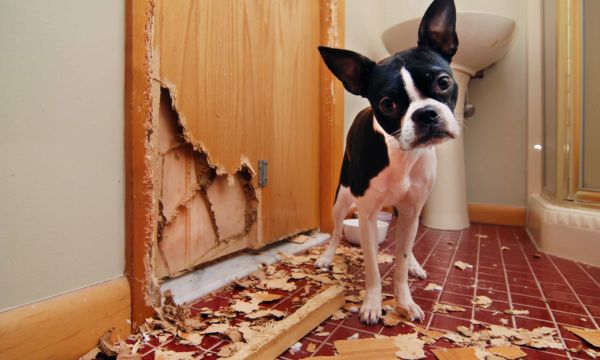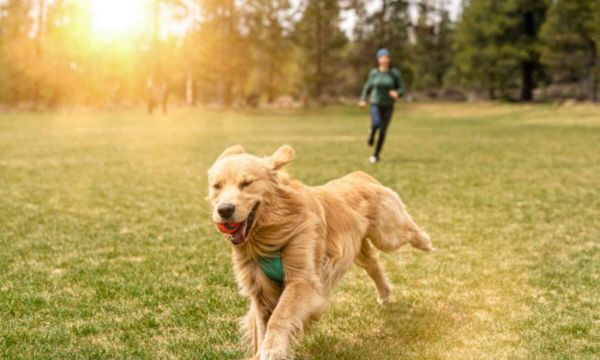Enrichment Activities for Behavior Improvement
Owning a pet is a rewarding experience, but it’s also your job to meet your furry friend’s behavioral needs. Activities that provide mental and physical stimulation are an important part of improving your pet’s life. Not only are these things fun, but they are also important for good behavior and mental health. In this detailed guide, we discuss the importance of enrichment and offer you many different ways to keep your pet busy, happy and mentally sharp.
Why Enrichment Activities are Important:
1. Physical And Mental Pleasure
“Enrichment” activities for your pet stimulate the senses and keep them physically and mentally active. These activities are good for overall health because they resemble the challenges and experiences animals face in their natural environment.
2. How To Prevent Boredom And Stress
Just like people, pets can get tired and stressed. Enrichment helps combat these negative emotions by keeping your pet entertained and reducing anxiety-related behaviors.
3. Better Troubleshooting
Many enrichment activities involve problem solving and critical thinking, which can make your pet smarter and better problem solvers.
4. Help With Behavior Problems
With regular stimulation, the dog is less likely to do things it shouldn’t, such as barking excessively, chewing on things it shouldn’t, or digging. When a pet is mentally and physically active, it is less likely to do bad things.
Types of Enrichment Activities:
1. Food Puzzle Toys
Toys that require your pet to work for food, such as a Kong toy or a food release ball, are called “food puzzles.” This toy keeps their brain busy so they don’t get bored.
2. Interactive Play
Play with them with toys like tug of war for dogs. This strengthens the bond between you and your pet and allows your pet to exercise.
3. Hide-and-Seek
Hide treats or toys around the house and encourage your pet to look for them. This game taps into their natural desire to hunt and keeps their brains busy.
4. Training Classes
Regular training classes not only make people more obedient, but also keep their minds active. Teach your pet new tricks or review the clues it already knows.
5. Sensory Activities
Take your pet to “sniff” your garden or a nearby park to stimulate his senses and let him smell different scents.
6. Make Friends
Schedule play dates for your dog with other dogs, or take him out to meet new friends. When they develop good relationships with other people, their social skills improve and their anxiety decreases.
7. Make Your Own Obstacle Course
Use things like chairs, brooms, and cardboard boxes to create an obstacle course. This causes people to move around and come up with solutions to problems.
8. Treasure Hunt
Hide treats or toys in different places for prize hunting. Give your pet clues or hints to help him find the secret treat.
Enrichment Activities for Dogs:
1. Agility Training
Build a small agility course in your backyard with cones, tunnels and jumps. This will keep your dog’s body and brain busy.
2. Fetch Variations
Use different balls or toys to vary the way you catch the ball. Your dog can also find your hidden toys.
3. Playing With Water
If your dog likes water, you can let him play with a water hose or fill a small pool for him to splash around in.
Incorporating Enrichment into Daily Life:
1. Make a Schedule
Add tasks that help you fit into your daily routine. For example, schedule playtime or hide snacks before going to work.
2. Rotate Toys
Replace your pet’s toys every few days to keep him interested. This ensures that they do not get tired of doing the same thing over and over again.
3. Explore the Outdoors
You can keep your pet on a leash outside or in a secure yard. Nature is full of beautiful sights, sounds and smells.
4. DIY Projects
DIY projects can help you express your creativity. Cardboard boxes can be used to create an obstacle course or a game of treats.
5. Feed Carefully
Instead of putting your pet’s food in a bowl, scatter it around the yard or hide it in a jigsaw puzzle.
The Impact of Enrichment on Behavior Change:
1. Lessons From Fear
Enrichment activities provide a way for dogs to burn off excess energy and prevent them from doing things like barking excessively or chewing on things they shouldn’t.
2. Better Concentration
Keeping your pet’s mind active on a regular basis will help him focus better and make training sessions run more smoothly.
3. Behavioral Problems
Enrichment can help with behavioral issues such as separation anxiety or anxiety-based behaviors by giving people something to do and to keep them busy.
4. How To Avoid Boredom
By getting your pet to do something to keep him from getting bored, you reduce the chances of him doing something bad out of anger.
Case Study: How Enrichment Helped Change Luna
Meet Luna, a three-year-old Border Collie with lots of energy. Luna’s owner, David, found that her energy often turned into bad behavior when she was alone.
David’s Method
David has added a series of useful activities to Luna’s daily routine. He made food puzzles, built a DIY obstacle course, and even enrolled Luna in an agility class.
Luna’s behavior has changed a lot over time. She became happier, more focused and less inclined to do bad things. The combination of physical and mental stimulation has improved her overall health by giving her a place to release her energy.
Conclusion:
Providing your pet with plenty of activity can improve its behavior, mental health and overall quality of life. By doing these things every day, you can give your pet the mental and physical stimulation it needs to grow and thrive. Enrichment isn’t just about play; it is the key to a happy, healthy and well-behaved pet.
FAQs:
1. How often should I participate in enrichment activities with my pet?
The frequency of enrichment activities depends on the age, breed and energy level of your pet. Aim for daily activities, but adapt them to your pet’s individual needs.
2. Can enrichment activities replace regular exercise?
Enrichment activities complement, but do not replace, regular exercise. Both are essential to your pet’s health.
3. Are there specific enrichment activities for older pets?
Yes, there are tailored enrichment activities for older pets, such as gentle sensory experiences, educational toys, and slow play.
4. Can enrichment activities help address behavioral problems such as aggression?
Reinforcement activities can be part of an aggressive behavior modification program, but consult a professional behaviorist for a comprehensive strategy.
5. What if my pet is not interested in enrichment activities?
Not all pets have the same preferences. Experiment with different activities and toys to find the one that most engages and excites your pet.
Be sure to check out our article: Stop Destructive Chewing: Solutions. You’ll be surprised at how it will help you clarify doubts on the subject.
 Stop Destructive Chewing: Solutions
Stop Destructive Chewing: Solutions
Chewing is a natural behavior for dogs. It keeps them aware of their surroundings, keeps their teeth […]
More The Role of Exercise in Dog Behavior
The Role of Exercise in Dog Behavior
Exercise is important not only for your dog’s physical health, but also for his or her behavior, […]
More Dog Behavior and Nutrition: Vital Connection
Dog Behavior and Nutrition: Vital Connection
The connection between a dog’s behavior and what he eats is an important part of canine health […]
More